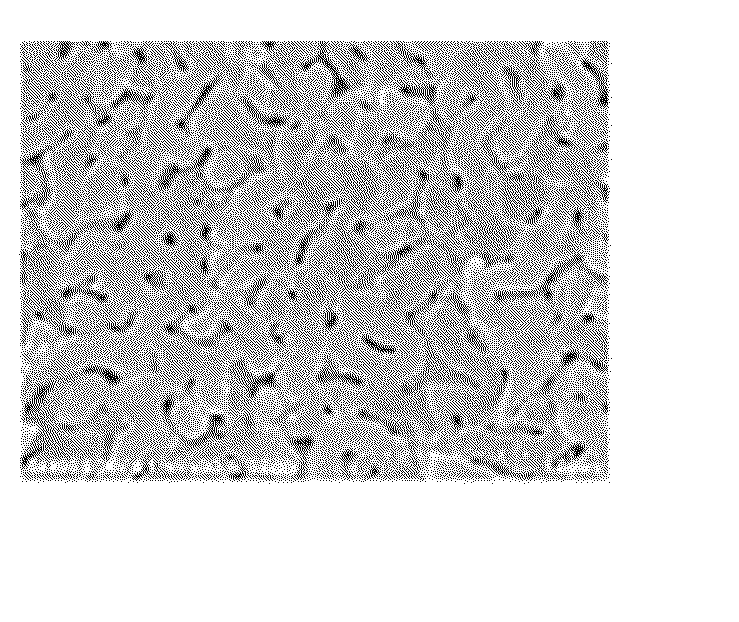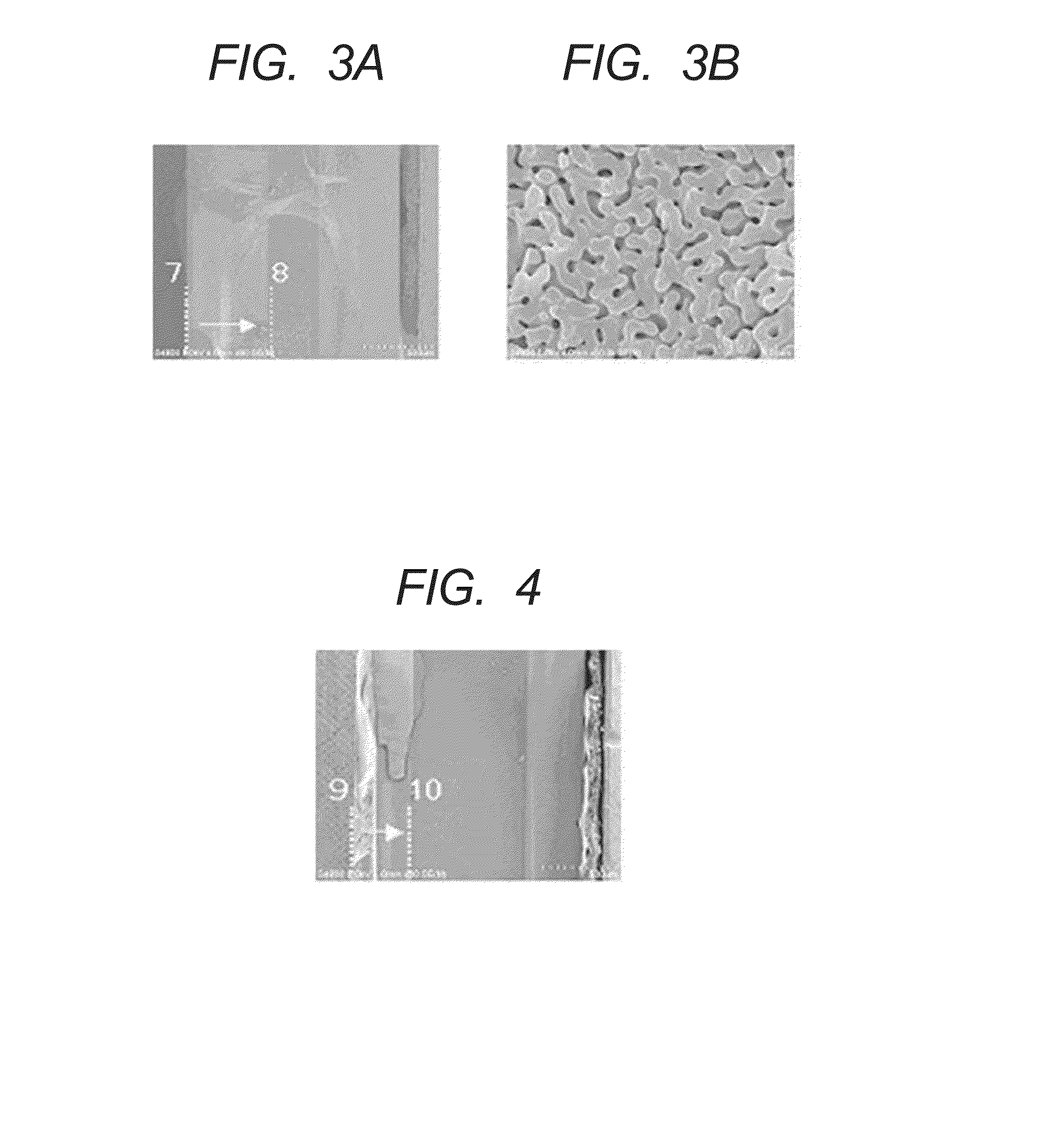Method of producing porous glass
a technology of porous glass and sand, which is applied in the direction of paper/cardboard articles, etc., can solve the problems of difficult handling of hydrofluoric acid used in this method, no method of accelerating or preventing the removal of gel-like silica, and glass may crack depending on the type of glass, etc., to achieve the effect of shortening the treatment tim
- Summary
- Abstract
- Description
- Claims
- Application Information
AI Technical Summary
Benefits of technology
Problems solved by technology
Method used
Image
Examples
production examples 1 to 3
of phase-separated glass
[0040]In order to show Examples and Comparative Examples of the present invention, a phase-separated glass was produced with the composition in terms of oxide as shown in Table 1. As material compounds of silicon, boron, sodium, and aluminum, silica powder (SiO2), boron oxide (B2O2), sodium carbonate (Na2CO3), and alumina (Al2O2) were used, respectively. The mixed powder of the respective material compounds was placed in a platinum crucible and melted at 1500° C. for 24 hours. After that, the temperature was lowered to 1300° C., and the resultant was poured into a graphite mold. The mold was cooled in air for 20 minutes to obtain a borosilicate glass. A block of the borosilicate glass thus obtained was cut to 40 mm×30 mm×13 mm, and both surfaces were polished to mirror finish. The glass thus processed was subjected to phase separation treatment in an electric furnace under each of the conditions shown in Table 2.
TABLE 1Glass nameSiO2 wt %B2O3 wt %Na2O wt %Al2...
example 1
[0041]Glass etching was performed using the phase-separated glass of Production Example 1. A sample to be used was obtained by cutting the phase-separated glass to 15 mm×15 mm.
[0042]In etching with an acid, 50 g of 1 mol / L nitric acid were used as an acid solution. Nitric acid was placed in a container made of polypropylene, and the phase-separated glass hanging on a platinum wire was immersed so that an angle θ formed by the phase-separated glass surface and the liquid surface became 90° and the phase-separated glass was positioned at the center of the solution. The polypropylene container was covered and an ultrasonic wave was applied from a solution lower part. The applied ultrasonic wave had an ultrasonic wave output of 130 W and an oscillating frequency of 42 kHz. After the treatment for 2.5 hours, the glass etched with an acid was placed in water and rinsed for 90 minutes.
[0043]It was found by the observation with SEM that the range which was porosified was about 600 μm in a d...
example 2
[0045]The phase-separated glass of Production Example 1 cut to 15 mm×15 mm was used. In etching with an acid, 50 g of 1 mol / L nitric acid were used as an acid solution. Nitric acid was placed in a container made of polypropylene, and the phase-separated glass hanging on a platinum wire was immersed so that an angle θ formed by the phase-separated glass surface and the liquid surface became 10° and the phase-separated glass was positioned at the center of the solution. The polypropylene container was covered and an ultrasonic wave was applied from a solution lower part. The applied ultrasonic wave had an ultrasonic wave output of 130 W and an oscillating frequency of 42 kHz. After the treatment for 2.5 hours, the glass etched with an acid was placed in water and rinsed for 90 minutes.
[0046]It was that the range which was porosified was about 600 μm in a depth direction from the surface and the diameter of pores of the porous portion was about 100 nm. In addition, gel-like silica did ...
PUM
| Property | Measurement | Unit |
|---|---|---|
| angle | aaaaa | aaaaa |
| oscillating frequency | aaaaa | aaaaa |
| temperature | aaaaa | aaaaa |
Abstract
Description
Claims
Application Information
 Login to View More
Login to View More - R&D
- Intellectual Property
- Life Sciences
- Materials
- Tech Scout
- Unparalleled Data Quality
- Higher Quality Content
- 60% Fewer Hallucinations
Browse by: Latest US Patents, China's latest patents, Technical Efficacy Thesaurus, Application Domain, Technology Topic, Popular Technical Reports.
© 2025 PatSnap. All rights reserved.Legal|Privacy policy|Modern Slavery Act Transparency Statement|Sitemap|About US| Contact US: help@patsnap.com



